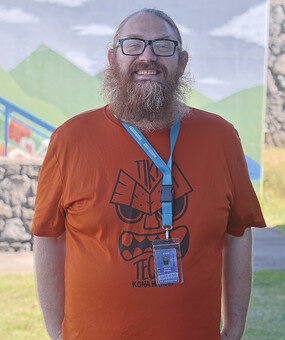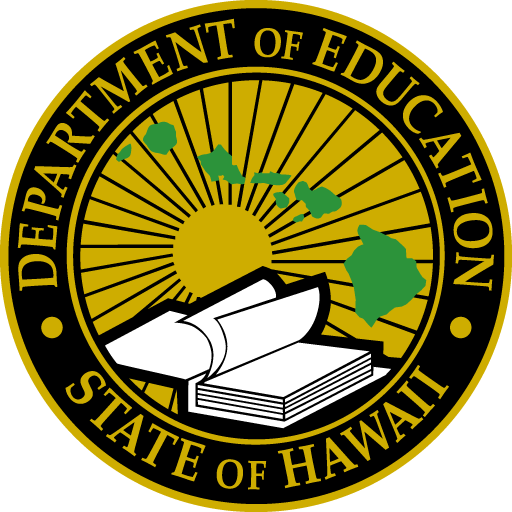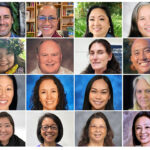
Justin Brown
Title: Career and Technical Education (CTE) Coordinator
Job site: Trường trung học Kealakehe
Years in the HIDOE: 16
Years in the position: 14
Q: Briefly describe your career path.
A: I started my career as a jazz musician playing bass in a variety of ensembles back in Texas. I also did some work in nonprofits and global relations before transitioning to Hawai‘i as part of the Teach For America Corps Program in 2009. I entered the classroom as a math teacher and quickly started supporting students with robotics, jazz, civics, and STEM extracurricular activities. Our students were fortunate to win several state competitions in my second year of teaching, and I transitioned into the CTE coordinator role after that. I continue to teach as many classes as possible, work with students to redefine what stories are told about public education and frequently travel when our students are fortunate enough to qualify for competition advancement.
Q: How did you get into this field?
A: I have been interested in education policy since I was 10-years-old. I come from multiple generations of teachers and both of my siblings and many of my cousins and aunts and uncles work in public education. I think I’ve always been curious about how and why students have access to different resources and outcomes between various communities as well as the unique role that public education plays, the dominant civil rights issue of this century.
Q: What are your primary duties?
A: I teach several engineering, civics, design and research classes which remain the highlight and primary focus of each day. I also support our career pathways, which includes over 1,000 enrolled students, nine physical career labs and almost two dozen professional educators. Within this work, my current main focuses are to bring in the resources, partners, systems, and structures that allow every student to complete a meaningful career pathway which requires living-wage employment within their community. This work currently includes expanding access to industry recognized credentials (IRCs), making more robust work based learning (WBL) experiences, ensuring universal access to meaningful career exploration components, evaluating local job market needs, integrating best practice from global career training programs, forging partnerships with post secondary education/training centers and elevating the role of CTE in state and national education policy.
Q: Favorite part about the job?
A: I get to introduce students to many amazing scientific phenomena for the first time in their life. It is such a privilege to really explain how an electron works or which properties embedded in the fundamental nature of a material allow it to solve design problems. We have all seen the great joy when a 2-year-old laughs uncontrollably as they discover some new face of nature. I get to continue this process for 15 and 16-year-olds, who may, at times, have forgotten the tremendous intrinsic joy available in learning something cool. I particularly like when the exploration of those phenomena allows students to compete and travel and meet alumni at universities and companies who have taken bold steps forward in how some of those phenomena can produce exciting, innovative products.
Q: Most challenging part about your position?
A: I constantly feel like I am not doing enough for enough students to justify the resources and opportunities we have. A lot of our education system, structures, buildings, and approaches are six economic generations old. In CTE, we must prepare every student for the economic generations to come which creates friction between what is happening and what needs to happen. Often, the tension between the headline and trendline aspects of the work keeps me quite anxious.
Q: What advice do you have for people considering this position?
A: Find a set of grounding values and beliefs that you can measure your success against for a given day, month, school year, decade, and career. Make sure to include universal access to excellent educational outcomes as at least one of those values. Then, you can be a great ally in ensuring that one day the best school in the whole world for most students in Hawai‘i will be their local public school. We aren’t there yet, but in many small ways and a few big ways we are closer than we were not too long ago.
Q: How does your role support student success?
A: I serve as a Zamboni, leveling the ice and filling in the gaps for a very talented team of teachers and industry partners who need a fast, reliable, and safe playing field for their skills development. Left on its own, the ice can get very rough and bumpy leading to many slips and falls as well as a higher friction resistance as people navigate their path. I like to be the first one on the ice each day, cleaning it out so that when our fantastic teachers get to work with our talented students, they can have the smoothest possible skate. Oftentimes, this means bringing in outside help from the community as we have expanded our courses and opportunities. Sometimes, I also get to be the one to skate with the students (especially on trips), which is a lot of fun.

